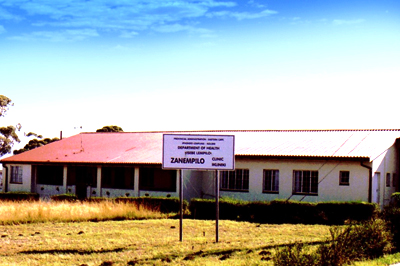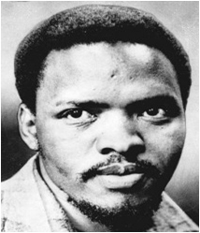In the late 1960s and early 1970s, after the banning of the ANC and PAC, the Black Consciousness Movement (BCM) resuscitated the anti-apartheid struggle in South Africa – at first through the establishment of the South African Students Organisation (SASO). Conscious of the limitations of a student-oriented organisation, the BCM subsequently developed a number of political and community organisations to widen the struggle and mobilise supporters from the wider black community. One such organisation, founded in January 1972 (although some sources report that it began in 1971), was Black Community Programmes (BCP), which focused on community projects.
The South Africa Council of Churches and the Christian Institute of Southern Africa established a research programme, the Study Project on Christianity in Apartheid Society (Spro-cas), to gather information about the role of Christianity and how it was being used or abused in the country. When Spro-cas’s funders put pressure on it to create a programme of action, they appointed Bennie Khoapa, a social worker at the YMCA, to undertake the task. The project dovetailed with the aims of the BCM, and using funds raised by Rev. Beyers Naude from European churches, BCP was launched with Khoapa as Director. Offices were set up at 86 Bearice Street in Durban in the same building used by SASO. The relationship between Spro-cas and BCP, which continued until the dissolution of Spro-cas at the end of 1973, was strong since both were formed with the aim of promoting true Christian principles in a racist society (Black Community Programmes, n.d. and Walshe, 1983).
BCP and the Black Consciousness Movement
The BCP developed out of one aspect of the BCM’sphilosophy – engaging in welfare work and programmes of self-help run by Blacks for Blacks. Steve Biko, as one of the founders of the BCM, was heavily involved in the running of BCP, which he joined in August 1972 after quitting his medical studies at the University of Natal. He described the rationale behind the organisation as
“”¦essentially to answer [the] problem”¦that the Black man is a defeated being who finds it very difficult to lift himself up by his bootstrings. He is alienated”¦He is made to live all the time concerned with matters of existence, concerned with tomorrow”¦Now, we felt that we must attempt to defeat and break this kind of attitude and instill once more a sense of dignity within the Black man. So what we did was to design various types of programs, present these to the Black community with an obvious illustration that these are done by the Black people for the sole purpose of uplifting the Black community. We believed that we teach people by example”(Biko in Bizos, 1998: 43)
The launch of the Black People’s Convention (BPC) early in 1973 added a political wing to the BC movement to complement the activities of BCP and SASO. Thus within the BCM there was a clear ‘division of labour’ – the BPC was the ‘adult’ political body, SASO the student body and the BCP the community projects arm.
According to Dr. Mamphela Ramphele, ‘Within the Black Consciousness Movement, BCP became the leader in the field of community development, but relied on the path breaking role of SASO for political direction.’ (Pityana et al, 1991: 156)
Although Biko was involved with BCP from its beginning, he was also, together with Barney Pityana and others, running SASO. After he was banned in March 1973 and restricted to King William’s Town, BCP became Biko’s main outlet for political activity. Although the state prohibited him from involvement with SASO, it at first failed to realise that BCP was a fully-fledged BC organisation, and Biko was able to take up a position as regional director in King William’s Town. Biko quickly gathered a few trusted comrades around him: Malusi Mpumlwana, Mapetla Mohapi, Thoko Mbanjwa, Mxolisi Mvovo, Biko’s sister Nobandile, and NohleHaya, who became Biko’s administrative assistant.
Ramphele notes: ‘The Eastern Cape office was set up in response to Steve Biko’s banning and restriction to that area in 1973. Offices in the Transvaal and Natal followed in 1974 and 1975 respectively, but the Eastern Cape emerged as the dominant region in terms of projects and the calibre of staff it employed.’ (Pityana et al, 1991: 160-1)
Thenjiwe Mtintso, who eventually joined Umkhonto we Sizwe, later painted a picture of life in King William’s Town: ‘When we built that community, around Steve, around King William’s Town, it really made us. It really made the good parts of me. We were building together, we were fumbling along starting so many things together, and that made us. And that created the political discipline that we think we have.’ (Pityana et al, 1991: 52)
Community Programmes, Publications and Leadership Training
One of BCP’s most important projects was the production and dissemination of Black journals and community newspapers, leading to a revival of cultural, political and literary activity. Through Ravan Press, established by Spro-cas and the Christian Institute to publish struggle literature, the BC annual, titled Black Review, was published from 1972 to 1976.
Biko, together with Thoko Mbanjwa and a small team, was the prime mover behind these publications, which sought to correct the distorted representation of the Black community as passive and incapable of intellectual production. But by the time the 1972 review was published in 1973, Biko had been banned, and the book listed its editor as Bennie Khoapa, but was dedicated to Biko and Bokwe Mafuna, who had also been banned in March 1973. Mbanjwa went on to edit the 1974-5 edition, while the 1976-77 edition was edited by Asha Rambally after Mbanjwa was banned.
Other occasional journals, such as Creativity in Development and Black Perspectives, as well as Black Viewpoint, were also published. In trying to reflect work being done in Black communities, BCP carried out a countrywide survey of Black organisations, and in 1973 it published a directory of 70 of these organisations.
Ramphele, writing in 1991, outlines the effect of these publications: ‘The impact of Black Review was immeasurable. Black organisations were inspired by it. It provided information about issues and the efforts of people across the length and breadth of South Africa which few had hitherto been aware of. Networking between community workers was thus facilitated.’ (Pityana et al, 1991: 162)
BCP was also heavily involved in training and youth development projects, a side of the organisation that eventually yielded events of massive significance. Biko clearly understood the need to have people available to replace cadres who might be banned by the state and, together withSASO’s national organiser Harry Nengwekhulu, he ran leadership seminars from mid-1972 until the pair were banned.
Biko and Nengwekhulu created the National Youth Organisation, an umbrella body for regional youth organisations, as well as the South African Student Movement (SASM), which organised Student Representative Committees at high schools, the most famous of these being the Soweto SRC, which organised the June 1976 uprising.
Ramphele notes that training for activists ‘provided practical exposure to community development responsibilities, encouraged creative leadership’ and included practical skills ‘in administration, organisational dynamics, social analysis and public speaking’. (Pityana et al, 1991:164)
 Zanempilo Community Health Centre today (www.sbf.org.za)
Zanempilo Community Health Centre today (www.sbf.org.za)
One of the more enduring structures established as a BCP initiative was the Zanempilo Community Health Centre with Ramphele as the driving force. Situated in Zinyoka, 10km outside King William’s Town, it opened in January 1975 and was one of the first primary healthcare initiatives outside the public sector in South Africa and provided much needed community health education. However, the centre was not solely a health facility, it became a meeting point and a training ground for activists, a place where the community could gather to discuss issues, but also a place for joy and celebration, an example of the communal life that Biko and Pityana had spoken about.
The success of the Zanempilo project led to a similar establishment on the south coast of Natal, named Solempilo (Eye of Health), but the ban on BC organisations in 1977 put an end to the project.
When Ramphele was banned and restricted to Tzaneen, Northern Transvaal in 1977, she formed the Isutheng Community Health Programme with money from BCP. Through Isutheng, she set about empowering women and encouraging them to establish vegetable gardens and other economic initiatives. Almost all of such BCP health projects were housed on church land.
Church organisations assisted BCP with many of its programmes but BCP in turn assisted in running church programmes. In May 1972 BCP sponsored a church conference which focused on developing a more effective and Black-oriented preaching of the Gospel. On the basis of this the ‘Black Theology Agency’ was formed in February 1973 at another BCP-sponsored conference. The establishment and funding of the Zimele Trust Fund was another way political activists and religious figures worked together.
 Steve Biko who was involved in developing many of the BCP’s projects in the Eastern Cape (www.mg.co.za)
Steve Biko who was involved in developing many of the BCP’s projects in the Eastern Cape (www.mg.co.za)
Biko established the Zimele Trust Fund in 1975 to improve upon a project runby Thenjiwe Mtintso together with the Border Council of Churches. The Fund, administered by Mapetla Mohapi, was used to cover the start-up costs of income-generating activities of families of political prisoners or those just released from prison. The Fund had particular success with a brick-making scheme in Dimbaza and the money for such projects came from fundraising carried out by Father Aelred Stubbs among churches in Europe.
In line with the project to promote self-reliance, BCP was involved in building schools, clinics and day-care centres across the country, and set up home-based industries and cooperatives in many rural areas. Cottage industries producing leather goods were set up in Zinyoka, Njwaxa and Norwood, all villages near King William’s Town, and later in Cape Town.
When the leatherwork project proved successful, women in Zinyoka were tasked with finishing the leather. Demand grew and MxolisiMvovo became a fulltime salesman for the goods. So successful was the enterprise that a new building was erected next to the Zanempilo clinic to facilitate production of the leather goods.
Other home industries were started in the Transkei, as well as an agricultural scheme along the Bashee River. In the Transvaal, Aubrey Mokoena organised sewing groups for women. In Cape Town Peter Jones and others set up a clothing factory which was turned into a co-op.
BCP also organised childcare centres in Ginsberg and a consumer co-op in King William’s Town.
Bannings and Restrictions
The 1970s was a turbulent period during which the anti-apartheid movement was continually changing its tactics in the face of growing government pressure and sporadic crack-downs. The work done by BCP and its involvement with the BCM did not go unnoticed by the apartheid government.
In March 1973, barely a year after its inception, the BCP Johannesburg Branch Executive, Bokwe Mafuna, and the King William’s Town Branch Executive, Steve Biko, were banned. Biko’s restriction order was later widened to halt his BCP activities. These were followed in August by further restrictions placed on Sam Moodley (Programme Assistant at the Durban office), Bennie Khoapa (the Director of BCP) – who was restricted to the Umlazi magisterial district, and Malusi Mpumlwana, Programme Assistant at the King William’s Town Branch (Black Community Programmes, n.d.). By 1974 more than 20 BCM activists were banned, many of whom were involved in the BCP.
This was the beginning of a police investigation into BCP, the Christian Institute and allied organisations, all of which were implicated in what the police deemed ‘a programme for radical change in South Africa’. Thus on 19 October 1977, a month after the death of Biko, the security police shut down the BCP and all other BCM associated bodies. These bodies were declared illegal and many of their members received banning orders.